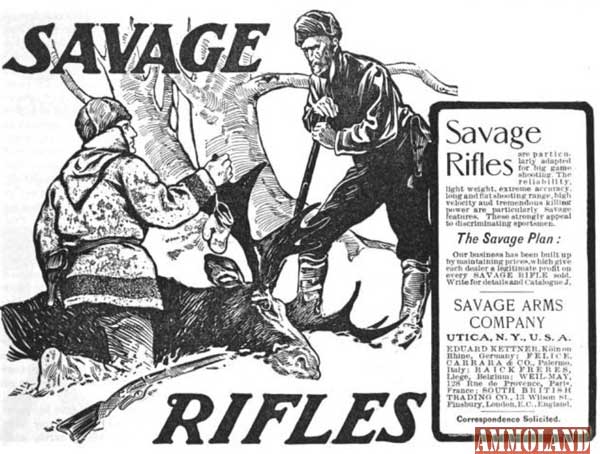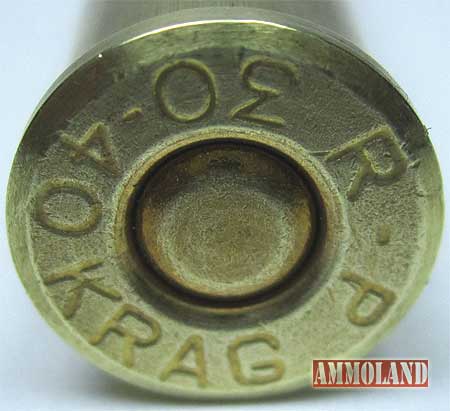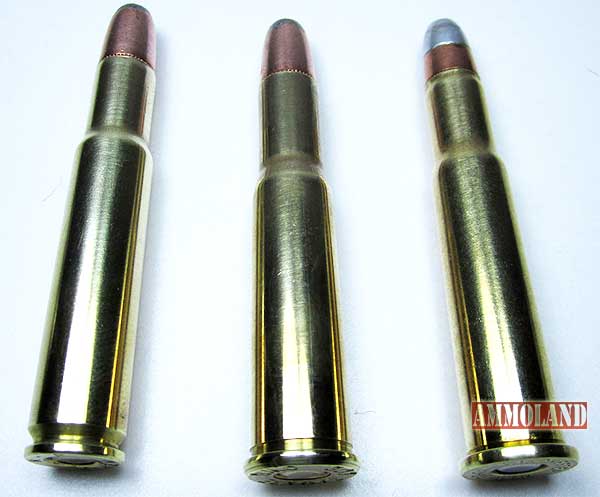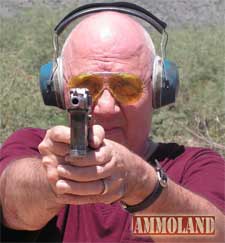By Bob Shell

Apache Junction, AZ –-(Ammoland.com)- The 303 Savage 99: By the early 1890’s smokeless powder was becoming better known to the public as well as the gun makers.
The militaries of the world were all using the stuff for their small arms as well as their machine guns. Of course, the public wanted hunting arms chambered for the new powder as it gives higher velocities and longer ranges.
At first higher velocities brought out problems with bullet designs but that’s another story.
Anyway, in 1895 Winchester brought out the 94 in 30-30 and the race was on. The 30-30 is considered one of the first civilian small-bore smokeless cartridges and is still going strong today.
When Winchester brought out the model 94 in 30-30 in 1895 Savage among others saw a good thing and wanted to get in on it.
The Savage model 99 was introduced in 1895 in a variety of calibers including the 303. When first brought out it was developed as a potential military cartridge but that never came about. An earlier version was placed in the military trials against about 50 other designs but the Krag won out.

Also for a while it used .311 diameter bullets but at some point changed to 308. Some factory loads can be found in the 311 diameter and I have miked them as such. However, a vast majority of Savages use a 308 diameter bullet. Also, the factory offered a 190-grain bullet which was liked by some hunters for its potential penetration. Most manufacturing activity for Savage ammo ceased after WW ll though an occasional lot was produced from time to time.
While ballistically similar to the 30-30 they would not interchange. The Savage case is shorter and fatter then the more successful 30-30. Unlike the 30-30 the Savage round was never necked up or down commercially.

Some people have asked me if it’s ok to fire a 30-30 in a 303. In a word NO!
The 30-30 base is .020 smaller then the 303 so there would likely be a case rupture which could be disastrous. While the 99 is a fine action capable of handling some high intensity calibers such as the 308 Winchester you still need to make sure you are firing the correct cartridge. I have seen a few people get the 303 British and Savage rounds mixed up. They are not the same.

Happily, the 99 is still around and should be for a long time. I have several model 99 Savage rifles and they function as they should. The magazine feeds in a flawless manner as long as the ammo isn’t too long and the safety locks the lever in place and prevents the gun from firing accidentally.
For a hunting gun, the trigger is pretty decent breaking around 5 lbs or so depending on which rifle I use. I have a friend who collects model 99 Savages and has an example that has 30 Savage stamped on the barrel. Initially we thought that it was a 303 Savage but it turned out to be a 30-30 Winchester.
Back in those days there was some hard feelings between Savage and Winchester and apparently even though Savage chambered for the 30-30 they wouldn’t acknowledge it in writing.
While the 30-30 still flourishes the 303 and the other competitor the 30 Remington fell by the wayside years back. Ammo for both is hard to find and cases for reloading, especially for the 303 have pretty well dried up. Sometimes factory ammo can be found at a gun show but don’t count on it.
Making brass for the 303 is very difficult unless you have special equipment. The 30-40 Krag and 303 British cases can be swaged down and used if you have the tooling to do it. The rim on both has to be cut down also in order to chamber in the 303. I buy my brass from Buffalo Arms www.buffaloarms.com and it works very well as do all their products. Norma recently introduced brass for the 303 and Huntington Die sells it. Graff and Jamison both list 303 Savage brass but as of this writing it’s not available on a general scale.
Loading data can be found in some of the older manuals and Cartridges of the World. Also, 30-30 loading data can be used if you are careful. Barnes makes a 150-grain copper bullet for those who are interested. For info on the Barnes bullets go to www.barnesbullets.com The 180 grain in the tables was made by the author which should give good penetration. Loaded ammo can be bought in the 303 as well as other obsolete calibers.

The success of a cartridge is usually measured by its sales. No matter what its ballistic attributes are if it doesn’t sell then it’s considered a failure at least commercially. The 303 Savage was popular for a number of years but eventfully fell by the wayside. Mild recoil, decent accuracy, and quality rifles weren’t enough to keep it alive.
If you have a 99 in 303 Savage it will make a good woods gun for deer out to about 150 yards depending on how well you shoot. The only downside is ammo isn’t widely available.
The model 99 is a strong rifle as evidenced by some of its chamberings in calibers such as the 308 Winchester.
Having said that it doesn’t mean that you should try and make a 308 out of the 303 Savage round. There are many factors involved in reloading ammo and using common sense and safety techniques is always a must. Always wear hearing and eye protection when shooting.
Load Bullet Velocity Comment
Load Bullet Velocity Comment
- 8 X Trail Boss 110 grain round nose 1154 high es
- 8 X Unique 110 grain round nose 1275 high es
- 35 X Data 4197 110 grain round nose 2705 varmint
- 30 X 4197 150 grain spitzer 2209 deer
- 34 X 2520 150 grain 2253 ok
- 36 X AA 2460 150 grain spitzer 2297 consistent
- 8 X Trail Boss 165 grain cast 1165 consistent
- 10 X Unique 165 grain cast 1521 consistent
- 10 X Trail Boss 165 grain cast 1307 consistent
- 34 X AA 2460 170 grain 2209 ok
- 35 X 748 170 grain 2127 consistent
- 32 X 2520 180 grain 2113 consistent
- 34 X IMR 4895 180 grain 2151 decent
- 33 X 2460 180 grain 2150 good load
The Savage rifle that I shot gave good groups at 50 and 100 yards with open sights. I was able to keep them in a 2” or less group which is good for me. Since the gun is older and original I won’t drill or tap it for a scope despite the fact that it would be more accurate. Feeding and function was flawless.
The Savage has the ability to take pointed bullets because it’s a rotary magazine as opposed to the model 94 Winchester or Marlin 336 tubular magazines. That would give it a slightly flatter trajectory as compared to the flat nose bullets. How much of an advantage that is open to conjecture.
As a note Hornady recently introduced pointed LEVERevolution bullets that are safe in tubular magazines for the 30-30 as well as other chamberings. Without a doubt they will work in the 303 as well though the 160 grain bullets would be a handloading proposition. I have loaded some of the 160 grain Hornady’s in the 303 Savage and they are a perfect fit. For more info go to www.hornadybullets.com. I use the same bullets as I use in the 30 Remington and the 30-30. I do make the 180-grain flat nose to try and duplicate the old factory load and it shoots well. It should be adequate for a black bear and wild boar at woods ranges.
There are a lot of 303 Savages still around as I get a lot of correspondence about them. Let’s hope that they are with us as long as there is hunting.
About Bob Shell
A Custom Reloader of Obsolete and Antique Ammo, Bob Shell, writes about the subject of Guns, Ammo, Shooting and Related Subjects. Visit: www.bobshellsblog.blogspot.com

